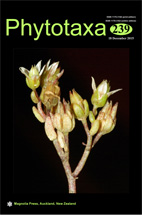Abstract
The white saddle-mushroom, a well-known European species, has long been named as Helvella crispa in China. In this study, phylogenetic analyses of combined ITS, nrLSU, tef1-α, rpb2 and mcm7 sequence data, showed that the Chinese H. crispa-like samples represent a species complex, which contains at least six phylogenetic species. Three of these species, H. involuta, H. orienticrispa and H. pseudoreflexa, are introduced as new species in this paper. The remaining two taxa are not described due to paucity of material. Among the six phylogenetic species, H. zhongtiaoensis is more closely related to European H. crispa than the remaining Chinese species. They are provided with descriptions, photographs and are compared with similar species. A key to the Chinese morphologically recognizable taxa of this complex is provided.

